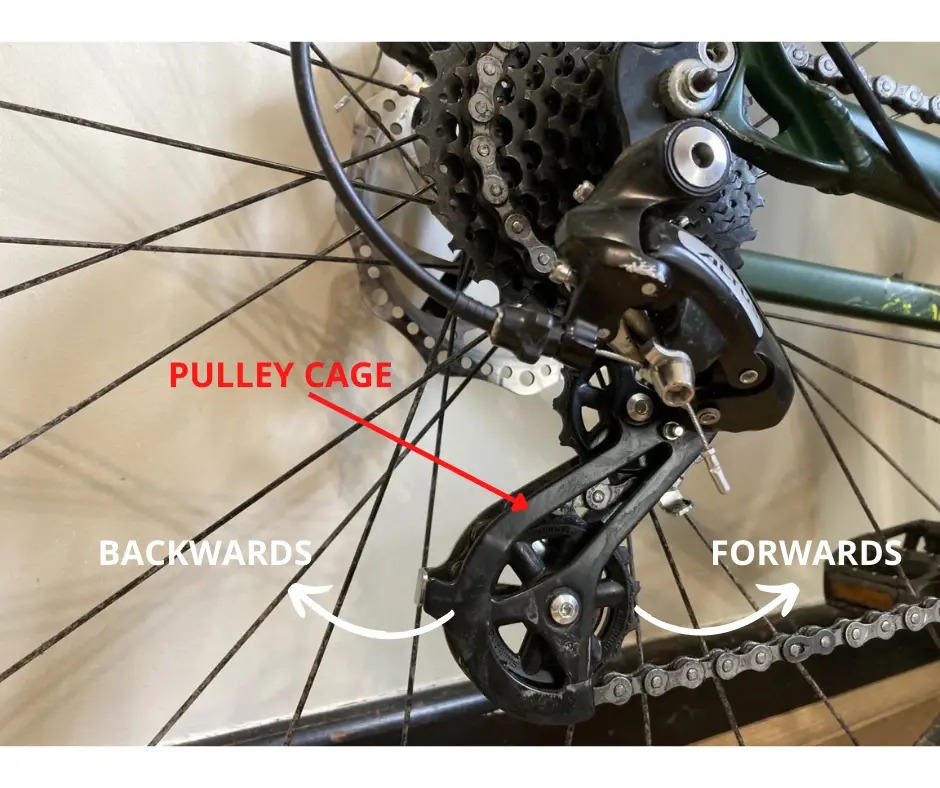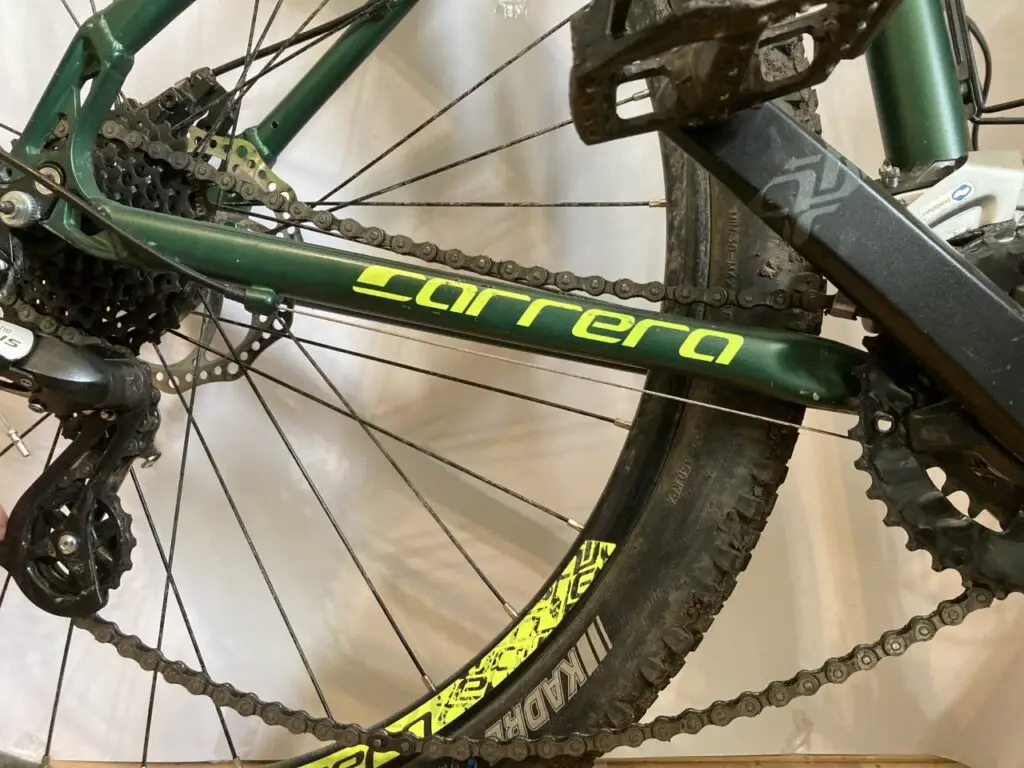You may have heard of mountain bike clutches or clutch derailleurs but not be certain what they are or how they work.
This article explains everything you need to know about bike clutches, including their function and benefits.
Here’s What a Mountain Bike Clutch Is:
A bike clutch is a mechanism that prevents the pulley cage of the rear derailleur from moving forwards freely. This stops the pulley cage from moving forwards when the bike hits a bump, keeping the chain tight and therefore preventing chain slip and stopping the chain from falling off the chainring.
Table of Contents
What Does a Mountain Bike Clutch Do?
A mountain bike clutch is a mechanism that provides tension to the rear derailleur pulley cage in the backward direction. This allows the rear pulley cage to move backwards freely but prevents it from moving forwards easily.
This is beneficial when riding over rough or bumpy terrain as the derailleur cage won’t be able to move forwards, therefore the chain will remain tight reducing the likelihood of the chain slipping or coming off completely and ending up in your spokes.

The alternative to having a clutch is a simple spring-loaded pulley cage that enables the rear derailleur cage plate to move forwards and backwards without resistance.
When the cage is able to move forwards freely, any bumps in the trail will cause the cage to move forwards and will result in the chain becoming slack.
With this loss of chain tension not only does pedalling become less efficient but there’s also the risk of chain slap or worse, the chain coming off the chainring altogether and ending up entangled in the spokes.
Do You Need a Clutch on Your Mountain Bike?
Clutch derailleurs, whilst not essential will reduce chain slap as well as the risk of your chain coming off altogether. For anyone riding their bike off-road or on any surface aside from smooth roads, a clutch derailleur is a worthwhile investment.
Whilst they are not essential, the benefit of a clutch derailleur will be felt immediately by any mountain bikers that are used to riding without one.
Simply not having to listen to that awful chain slapping sound makes clutch derailleurs worth it.
It’s also worth noting that the clutch will typically have a switch located on the rear derailleur that can be switched on or off.
How Can You Tell if Your Derailleur Has a Clutch?
You’ll be able to tell if your derailleur has a clutch by looking for the switching mechanism located on the rear derailleur.
Additionally, if your bike has a clutch and the clutch is switched on, you will be able to feel resistance if you try and push the cage forwards.
You can test this by attempting to push the lower pulley of the derailleur forward.
If you’d like to see how this works in practice, check out this YouTube video from Bike Teacher:
The video focuses on a Shimano clutched derailleur system, but the principle is the same regardless of what brand the derailleur is.
When Should You Use Your Bike Clutch? (When Should Your Clutch be On/Off?)
A bike clutch should be in the ‘on’ position all the time whilst riding in order to maintain chain tension and reduce the risk of skipping gears or the chain falling off entirely. The only time the clutch should be switched off is when the back wheel is being removed.
There’s no reason that a bike with a clutch should ever be ridden without the clutch engaged.
It’s not bad for the bike or the clutch to do so, however, none of the benefits of the clutch are realized with the clutch switched off. You would just be increasing the risk of chain slap damaging your paintwork or your chain falling off unnecessarily.
Pros and cons of a clutch derailleur
Whilst clutch derailleurs are a major benefit to virtually every mountain biker there are just a couple of downsides that are worth mentioning. Let’s take a look at the pros and cons of a clutch:
| PROS | CONS |
| – Prevents chain slap, protecting the paintwork | – Adds some weight to the drivetrain |
| – Minimises noise whilst riding | – Clutch derailleurs are typically more expensive |
| – Prevents chain coming off the chainring | – Additional parts can mean more maintenance |
We’ve already discussed the pros of having a clutch derailleur, so let’s consider the cons for a second.
Clutch derailleurs will add some weight to the drivetrain, however the weight increase is tiny in mountain bike terms. If we were talking road bikes where people will happily pay thousands of dollars to save an ounce of weight, fair enough. But for mountain bikers, the weight increase from a clutch won’t be noticeable.
Clutch derailleurs are usually slightly more expensive than their clutch-free counterparts, but the benefit to cost ratio is huge. A clutch derailleur is one of the most bang-for-buck upgrades you can invest in for your bike.
The last potential downside of having a clutch is down to the fact that more parts equals more potential maintenance.
The fewer parts a bike has, the less can go wrong. That said, clutches are generally robust parts that require less maintenance than other elements of the drivetrain. If you purchase a clutch derailleur from a decent manufacturer like Shimano or SRAM, you should be fine.

Are Clutch Derailleurs Worth It?
Weighing up the pros and cons, clutch derailleurs are definitely worth it if you intend to be riding your bike off-road. The benefits of having constant tension on the chain far outweigh any drawbacks.
Which Derailleurs Have a Clutch?
The majority of mid to upper-end mountain bikes will come with a clutch derailleur. They are less common as standard on lower-end mountain bikes.
That said clutch derailleurs are increasingly more common on those lower-end bikes with a single chainring, such as a 1×11 or 1×12 setup.
Related Questions
Do Road Bikes Have Clutches?
Clutch derailleurs are available for road bikes, with major manufacturers like Shimano offering clutch variants of their popular models. Clutch derailleurs are far less common on road bikes as the main benefit of maintaining chain tension when hitting bumps or jumps is unnecessary for most road cyclists.
For the small minority of road bike owners that do some level of off-roading, such as those taking part in cyclocross, the benefits of a clutch derailleur are the same as those experienced by a mountain biker.
Do Gravel Bikes Have Clutches?
As with road bikes, clutch derailleurs are available for gravel bikes. Whilst the majority of road cyclists won’t require a clutch, a gravel bike owner will likely benefit from a clutch derailleur, particularly if they ride unpaved, bumpy tracks frequently.
